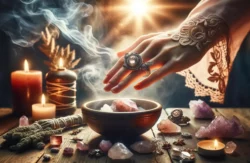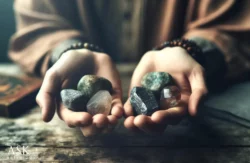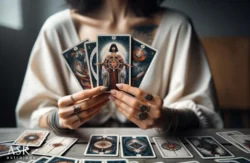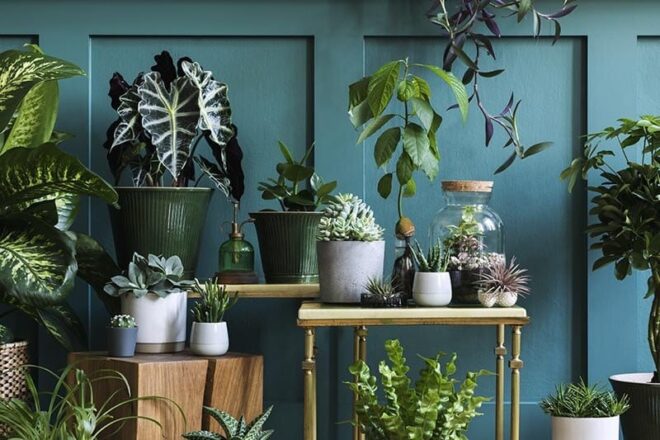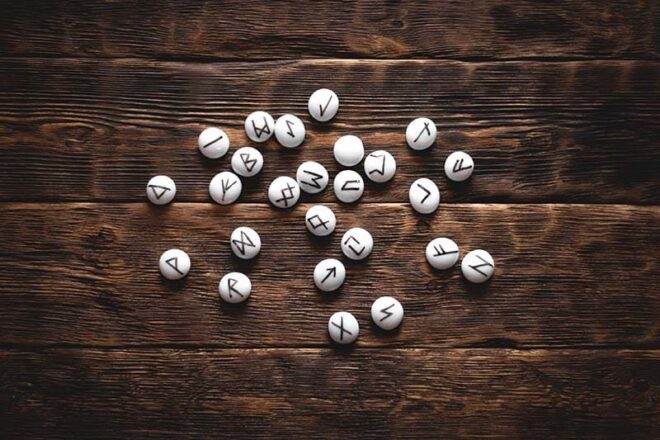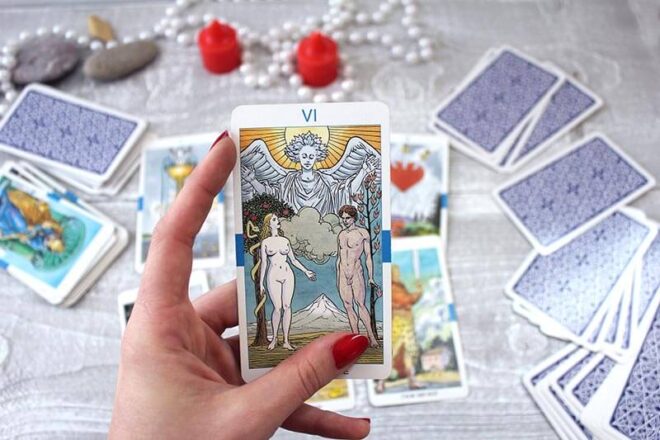The practices of Feng Shui and meditation complement each other well. Both bring more harmony and balance into your life. A dedicated Feng Shui meditation room will make you a happier, healthier, and more productive human being. It can also help heal a troubled soul. Feng Shui inspired meditation is infectious and the benefits you will receive will spread to your family, friends, co-workers, clients, patients, and everyone with whom you interact.
Choosing the Best Location For Your Feng Shui Meditation Room
There are a couple of good ways to choose where to put your Feng Shui meditation room. First, you can use a Bagua map to help guide you. A modern “western” version of Bagua will probably be easiest for you in this case since it is shaped like a square or rectangle as are most homes. The Bagua map is subdivided into nine squares. Orient the Bagua map with your front door at the base of the map, as this is the primary location where energy will flow in and then spread throughout your home.
After you have oriented your Bagua map correctly, each square in the map will show you the type of energy that is strongest in different regions of your home. You will see that knowledge energy is the strongest in the lower-left square of the map. Therefore, if you are meditating primarily to seek wisdom, or perhaps guidance on how to solve difficult problems, this would be an ideal location for your Feng Shui meditation room. You’ll also see the middle right square is associated with the strongest creative energy. If you are an artist, musician, writer, or businessperson, or may find locating your meditation room in this area a powerful source of inspiration. A parent dealing with a difficult child or special needs teacher may also find this location particularly helpful in finding unique and inspired ways to help the kids you are working with.
Next after this publicity
It may be that the layout of your home just doesn’t work for the guidance you are getting from the Bagua map. If this is the case, you don’t need to fret or move! There is a second method you can try. Meditate in all the possible locations that do work within the limitations of your floor plan. Choose the location that makes you feel the most grounded and the most centered at the end of a meditation session. Next, use the tips below to Feng Shui the room itself.
Preparing Your Feng Shui Meditation Room
– Remove all items from the room. This includes all furniture, curtains, blinds, wall hangings, decorations, rugs, and old carpet if possible.
– Clean the room from top to bottom. Thoroughly dust and sweep the floor, walls, ceiling, window sills, floorboards, molding, and light fixture(s). Mop the floors, scrub the walls, and wash all the detailing including the light switches. You can use an old toothbrush to clean the crevices. If you’re renting and must leave old carpet, vacuum it thoroughly, or better yet, wet vac it. Wash the windows inside and out. Use natural cleaners. You can make your own by mixing one cup of white vinegar (household vinegar, the type you buy at the grocery store) into a gallon of water. Add ten drops of any of the following essential oils to disinfect your surfaces: peppermint, lavender, lemon, orange, lemongrass, tea tree, or eucalyptus.
– Give the room a fresh coat of paint if possible. Choose a tranquil or neutral color.
– Open your window(s) and get rid of any negative and or stale energy by clapping in all four corners of the room. Be sure to have the window(s) open or this energy will not be able to escape nor will fresh positive energy be able to replace it.
– Leave the window(s) open. Using a sage smudge stick, purify the room. This is a bundle or dried sage rolled tightly into a cigar shape. You can get these from spiritual stores, health stores, natural food stores, co-ops, or online. Light one end and then rub it out in a fireproof bowl. This will start the smoking process. Walk slowly around the perimeter of the room while holding the smoking sage smudge stick. Gently wave the sage smoke into all areas of the room using your hand or a feather.
– Leave your window(s) open for at least two more hours to rejuvenate the air and energy in the room.
– If you are a spiritual or religious person, as a final preparatory step, say a prayer and or give a blessing to the room before you continue. You can also say aloud or simply think, positive affirmations while standing in the room with your hand placed over your heart.
– Clean any items you plan to bring back into the room thoroughly with earth-friendly, i.e. non-toxic, detergent or a home-made natural cleaner as described above.
Important Feng Shui Tips On Orientation, Furnishings, and Decorations
– Place a pillow, blanket, or chair in the position where you will sit to meditate. The best Feng Shui spot to meditate will put you in the command position. This is a spot where you can easily see the door and the window without turning around. If you can’t see both from any spot in the room, you can either choose a spot where you will look toward the door or the window and then place a mirror near this spot to see the other.
– If you use a chair, pick one that is made from natural organic materials such as wood, bamboo, or wicker. If you use a blanket, choose one made of natural organic materials such as hemp, wool, or silk. If you use a pillow, ensure both the covering and the stuffing is made of natural organic materials. The natural stuffing could include kapok, feathers, cotton, horsehair, wool, or buckwheat.
– Try to keep your Feng Shui meditation room simple. Don’t try to fill every space. Don’t try to be too fancy. Every object should have real meaning and or purpose and you should leave ample space for qi (energy) to flow.
– Add earthy colors to enhance the mood and invite reception. Light violent and blues represent transcendence. In Feng Shui, it is thought that color affects you even when you close your eyes because each color has a different type of energy associated with it. Regardless of your purpose with color, never use loud colors. For example, if you want to place a red object to represent wealth, you can use a muted red.
– Add living plants to add oxygen and vibrant energy. They will also bring the power of nature and the entire universe into your meditation space.
– Crystals bring energy into a room. Using your Feng Shui Bagua map, determine the areas of your room that are either governed by or enhanced by the earth element and locate your crystal(s) in one or more of these locations. These areas include the center (you can hang a Feng Shui crystal ball from the ceiling), the top left corner, the top right corner, the lower right corner, and the middle of the left wall. If you are in need of healing or deep exploration, consider using a geode crystal in your Feng Shui meditation room.
– Bring in other elements of nature. Fresh flowers, dried flowers, rocks rounded and polished by water, fossils, feathers, bones, seashells, and pinecones are just some examples. Choose natural objects that speak to your spirit.
– If you find running water particularly soothing, consider adding the gentle lull of a water fountain or a water feature. You can also simply play an MP3 of water or rain sticks. Using a Bagua map as your guide, your water feature or fountain is best placed in the wealth area of your Feng Shui meditation room.
– The scent has more of an effect on the human mind than most people realize. In fact, psychologists say that smells can evoke a long-forgotten memory more strongly than the other senses. Experiment with different essential oils to see what works best for you. Orange, rose, sandalwood, myrrh, and cedar are all popular for meditating. However, don’t limit yourself to trying only these as every person is unique in this regard.
Final Note
Don’t be rigid in how you approach your Feng Shui meditation room. For example, if you buy a special crystal for your room but find that this crystal disrupts your energy, by all means, remove it. The same should be true for any other object in your meditation room, regardless of whether or not it is supposed to help you meditate or bring you good Feng Shui. You have to trust your gut and don’t be rigid in your approach. This in fact is the Feng Shui way.


























